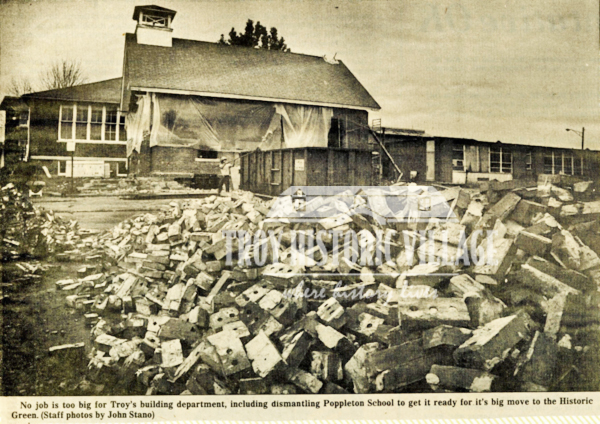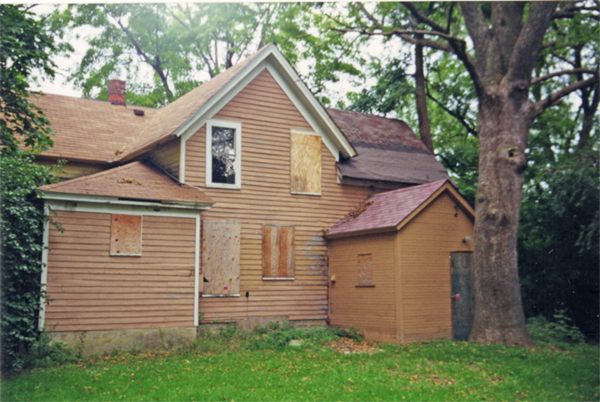
Buildings as Artifacts: Move it or lose it.
Unidentified newspaper clipping chronicling the brick by brick reconstruction of the Poppleton school.
What is the first thing that comes to your mind when you think of an object, or artifact, that belongs in a museum? If you’re a fan of the television show Mysteries at the Museum (as I am), you might think of a pair of shoes, a glass bottle, a table – a literal ‘piece of history.’ What about buildings?
Miriam Webster defines an artifact as “ a : something created by humans usually for a practical purpose; especially : an object remaining from a particular period <caves containing prehistoric artifacts> b : something characteristic of or resulting from a particular human institution, period, trend, or individual.”
Historic buildings represent the time and place in which they were built; methods and tools unique to a time period that leave behind indelible marks and which can be seen and experienced. A building is more than just an artificial structure and more than just a piece of history. It is in and of itself an immersion in history.
So, what happens when a building of historical significance is in the way of ‘progress’? Some buildings are demolished to make room for new buildings, street widening, freeways, commercial development, and so on. Others are too deteriorated to save. Sometimes, as in Troy Historic Village, a few structures can be saved through careful relocation and conservation.
Put simply, we move it or we lose it; relocate a structure from its original environment, in order to preserve it for future generations or lose it forever. This unlucky fate would have befallen the buildings that are part of Troy Historic Village, were it not for the passion of forward-thinking individuals in the Troy Historical Society and the cooperation and support of the community.
Troy Historical Society has become very adept at moving structures from original foundations, with several structures relocated intact in its’ 50 years of existence. Other buildings have been taken apart piece by piece and faithfully rebuilt like jigsaw puzzles, like the Poppleton School (above.)
Once a building arrives at the village, it doesn’t simply get set down and opened to visitors right away, just as smaller artifacts are not displayed right after donation. Time and weather have taken their toll. Previous occupants may have expanded or changed the building to incorporate more modern amenities. These layers of life must be faithfully peeled back, like an onion, to reveal the nature and the history of the original structure.
Do you recognize the Parsonage? (Photo from the Fran Stage Collection)
This is just a preview! Our new online exhibit chronicles the moving of eight buildings to the Village grounds. I invite you to step back in time and observe the tireless efforts of the Troy Historical Society- the volunteers and members of our community who have preserved our history. And the next time you walk through the Village, you can see the fruits of their efforts with a new appreciation of just how dedicated and passionate our community is about conserving our past and continuing this mission for the future.








